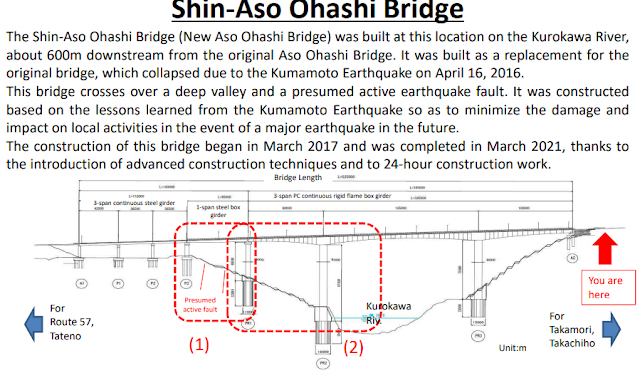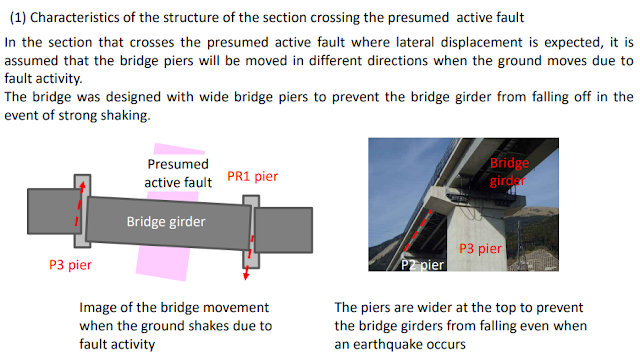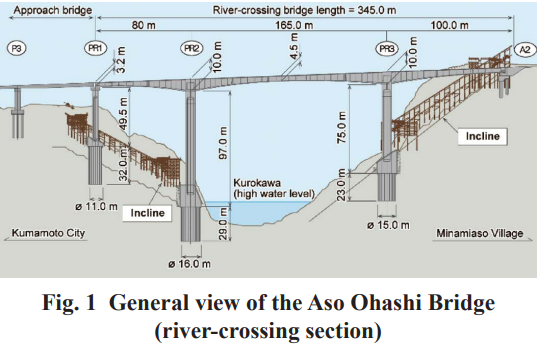Historically, drydocks were concrete bays that had a gate at one end. A ship would float in, the gate would be closed and the bay would be pumped dry. They were called graving yards because originally that is where old wooden boats would be taken apart for the lumber.
This is the first photo I have seen of water rushing into a graving dock.
 |
Interlake Steamship Company posted
Our M/V Stewart J. Cort is back in the water again as the dry dock is flooded at Fincantieri Bay Shipbuilding this evening.
Mychel Mazza: What does M/V stand for?????
Interlake Steamship Company: Mychel Mazza motor vessel! [As opposed to SS, which means steamship. (other prefixes)]
James Torgeson shared
The former Bethlehem Steel Great Lakes flagship and the first 1000' lake freighter, the Stewart J. Cort, is floated from a drydock [in Sturgeon Bay] after needed work and USCG inspection. She's now owned by MassMutual, but sails for the Interlake Steamship Company. (Note that the wide angle lens used for the photograph has distorted the ship's proportions!)
Shaun Connelly: I see that ship all the time at Cliffs burns harbor.
James Torgeson: Shaun Connelly That's her only destination, and the one she was built to serve!
|
For smaller boats, floating drydocks were developed. The drydock ballast tanks are flooded so that a boat can float into it. Then the water is pumped out of the ballast tanks so that it floats and raises the boat out of the water.
And floating drydocks grew to handle ships.
 |
Marine Video posted
USS ABSD-6 🚢
The advanced base sectional dock used as a floating dry dock by the US Navy, repairing USS South Dakota at Apra Harbor at Guam. South Dakota was in need of drydock repairs after an accidental explosion on 6 May 1945 while She was rearming from USS Wrangell.
Donald Soper: She wasn’t docked because of the explosion. “The battleship’s orders directed her to sail to Guam for inspection and repairs of her shafts and strut bearings to determine the cause of excessive vibration at high speeds, especially when she made 23 knots and used 10° or more left rudder”. The vibration was severe enough to disable radar and optical tracking systems in the superstructure. For details about the explosion and vibration issues, see
https://www.history.navy.mil/research/histories/ship-histories/danfs/s/south-dakota-ii--bb-57--chapter-3-19451969.html |
 |
War History Online posted
USS South Dakota (BB-57) in the floating drydock ABSD-3 at Guam. |
 |
The Ocean Buff posted
The floating dock Project 28140 is a state-of-the-art, self-docking, non-self-propelled repair dock with a lifting capacity of 8,000 tons. Designed by Sea Tech between 2011 and 2014, it was commissioned by the Azerbaijan State Caspian Shipping Company and built by OAO SSK from 2012 to 2014. The modular structure consists of six blocks, which were initially constructed at the Gorodets Shipyard between 2012 and 2013 before being transported to the Baku Ship Repair Yard for final assembly. The dock incorporates several innovative engineering solutions, including a busbar power distribution system, a distributed main switchboard, and advanced automated control systems for technical operations and submersion/emergence. These features make it the largest and most modern floating dock in the Caspian region. One of the primary challenges of the project was constructing a vessel of 158 x 36 meters on a river and then transporting the modular sections through locks before assembling them at the final location. Instead of a traditional centralized switchboard system requiring extensive post-assembly electrical work, the dock was designed with six equal switchboard sections interconnected via busbars. This significantly reduced the electrical installation workload at the final site. Automation systems were also pre-installed in modules, allowing 80% of systems to be tested and commissioned before delivery. The dock’s operational lifespan is set at 50 years, with pontoons designed for 24 years. The detachable pontoons can be replaced or repaired separately, ensuring the dock's longevity and continuous usability. This project introduced groundbreaking solutions in shipbuilding, making it a milestone in floating dock construction. Image Credits: Sea Tech Ltd. Adam Leifsen: Same design as the united states portable dry docks from ww2. |
This is in Oct 2023 because the museum ship is being refurbished.
.jpg) |
Steven Proto posted
Battleship Texas in dry dock. |
Or sometimes you can tip the ship to expose what needs to be worked on. I have seen a photo of a Great Lakes freighter tilted so that they could do emergency repairs to the bow thruster. But that photo got uploaded to the city in which it took place. And I now can't remember where that was. But here is another photo.
 |
Stu Mac posted
The VLCC S/R LONG BEACH, 211k DWT. Tipped aft using internal ballasting, in San Francisco Bay. USCG/Class approved and safely performed so that a fwd, in-hull transducer box could be worked on from a workboat. Sure beat having to go to a large drydock!
Nyall Gonsalves: What would cause ‘damage’ to in hull transducer box? Are they under or on the side of these tankers?
Stu Mac: Nyall Gonsalves , Located on bottom. Can’t recall if it was water ingress or problems with the transducer electronics. This procedure was/is performed on numerous ships. Sometimes also tipped down by the head so that the prop, rudder, shaft seals, etc could be maintained or repaired.
Charles Brown: How is that not gonna bend the keel though?
Stu Mac: Charles Brown , Stresses all pre-calculated by computer and with experience and managed safely with ballasting, while also monitoring weather, tides, currents, etc. Actually far less overall static longitudinal stress than some of what she or other ships might encounter in very dynamic fashion during severe storms at sea.
Bruce Harsch: Odd not to to see a Bulbous bow. |
Roger Stutler
posted two photos with the comment: "M/V bilson in drydock."
 |
| 1, cropped |
 |
| 2, cropped |
 |
Dave Gust posted
Newt Marine Service based out of Dubuque, IA is looking for an experienced marine mechanic to help service and maintain our fleet of tow boats. Check out www.newtmarine.com or message me for more details. *I'm not a recruiter, I work for Newt Marine. |
 |
[Lost the reference]
"Newt Marine offers an extensive line of dry docking and ship repair services. We have two drydocks, with 60 feet between the wing-walls and a capacity of over 600 gross TN, we can handle most vessels." |
Large floating drydocks made it easier for the Navy to project its power across the Pacific Ocean.
 |
MilitaryPhotoDepot posted
USS Wisconsin BB-64 taken in AFDB-1, at Apra Harbor, Guam, 5 April 1952. NHHC Image
David Dryer: Iowa Class Battleships [Then that drydock can hold the biggest battleships that the US built.]
Frederick Selstrom: The drydocks came apart to fit through the Panama canal .
[Several comments imply this was AFDM-8.] |
 |
Alexandre Salgueiro posted
USS MISSOURI (BB-63) undergoing modernisation in the 80’s.
Brandon Hopkins: I've seen other sources that claim that this is when she was being maintained in 2009-2010 in Pearl Harbor. Note the guys in Hawaiian shirts, also how low the black line is painted since it's not got its full displacement as a museum ship and doesn't sit as low in the water. The cranes also match some video i've seen.
Either way, it's always amazing how big they look when they're in drydock.
Greg Moyer: My home from 86-89 as a BT. This picture was taken in Hawaii when she became a museum. I think 09 or 2010 |
 |
MilitaryPhotoDepot posted
12/28/1944 USS Iowa (BB-61) entering and inside floating dry-dock ABSD-2, 28 December 1944. USN Image |
David Schauer
posted two photos with the comment: "All tucked away at the dry (graving) dock at
Fraser Shipyards this morning as workers dewater the dock so the
Michipicoten can be inspected. Superior, WI - June 21, 2024"
David Watt: Well, the divers did a preliminary inspection. To replace her, it would probably cost almost a billion, maybe even more. I'd bet once they sand blast her damage, and design a repair plan, She will be back in service by mid July, maybe even sooner. Many ships built during her time are still working. With the new welding techniques, the fixed area will be the best part of the ship. Heck, they might even spend a little more on upgrades.
Robert B Ritchie: David Watt The Algoma Equinox class run about $85,000,000.00. Plus...
It will be a tough decision.
Janey Anderson
shared with the comment:
Michipicoten - safe and sound at Fraser Shipyards/Superior.
Thanks so much David Schauer!❤️
June 21, 2024
Henry McGowan: The COAST GUARD will have the final say on whether it gets to go back out on the lakes , but the insurance company may not insure it now.
Kyran Clune: The underwriters will have the last word ,
Connie Egan Dompier: So this is a dry dock. In parentheses you have written graving. Exactly what does this mean, please?
Matthew Carlson: Connie Egan Dompier graving dock is the name of type of drydock, where the water is pumped out. There’s also what’s called floating dry docks that are basically like a big barge that sinks, the boat goes on them and then the water is pumped out from the ballast tanks to float it.
 |
| 1 |
 |
2
[Note the water discharge from the pumps into the river. And you can already see the top of the prop between the stern and the rudder.] |
 |
| Erik Pederson commented on David's post |
David Schauer
posted two photos with the comment: "A before and after image of the
Michipicoten at
Fraser Shipyards today as the water was drained from the dock. I didn't see any obvious signs of a weld - if one could be seen - on the starboard side, but I also didn't fly close out of respect for those working around the vessel. Superior, WI - June 21, 2024"
Tim Fink: How long did it take to drain the water??
David Schauer: Tim Fink I don't know when they started, but probably around 3 this morning and I was there after 1. Maybe 8-10 hours?
 |
| 1 |
 |
| 2 |
 |
Rob Culver commented on David's post
Well I’m obviously here as a boat nerd, in real life I’m a civil engineer with a background in geotechnical construction. The dry dock is having a wall failure, they tried to throw some tiebacks and walers in but it still appears to be failing. At least fill in the depression in the dirt so the water doesn’t settle there and exacerbate the problem. There, ok, now I can sleep. 😳 |












%20-%20Google%20Maps.png)






















.jpg)















